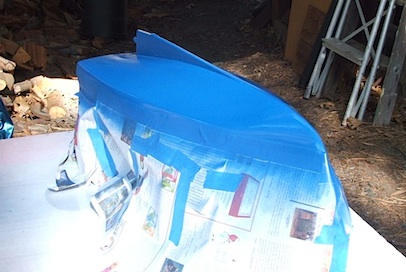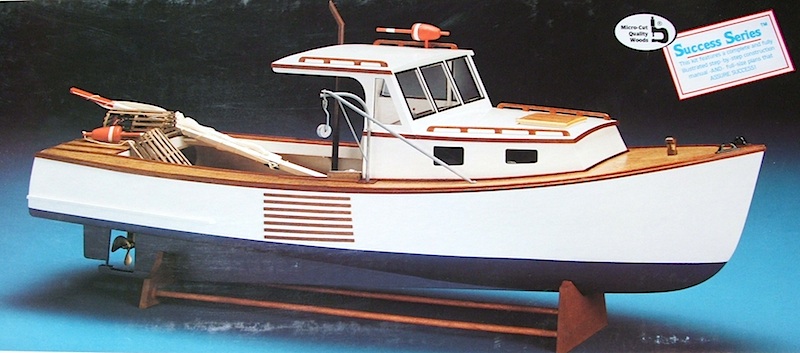
Now is time for the bottom paint. The white part of the hull has been protected with paper and masking tape. Traditionally, bottom paint (or more properly known as anti-fouling paint) was copper red. More modern paints though, are a variety of more pleasing colors.
|
|

This picture shows my red bootstripe. The bootstripe does not really do anything, it just adds a hint of character to the boat's appearance. It is just above the waterline. I think this paint arrangement is more often seen on pleasure boats than working fishing boats.
|

